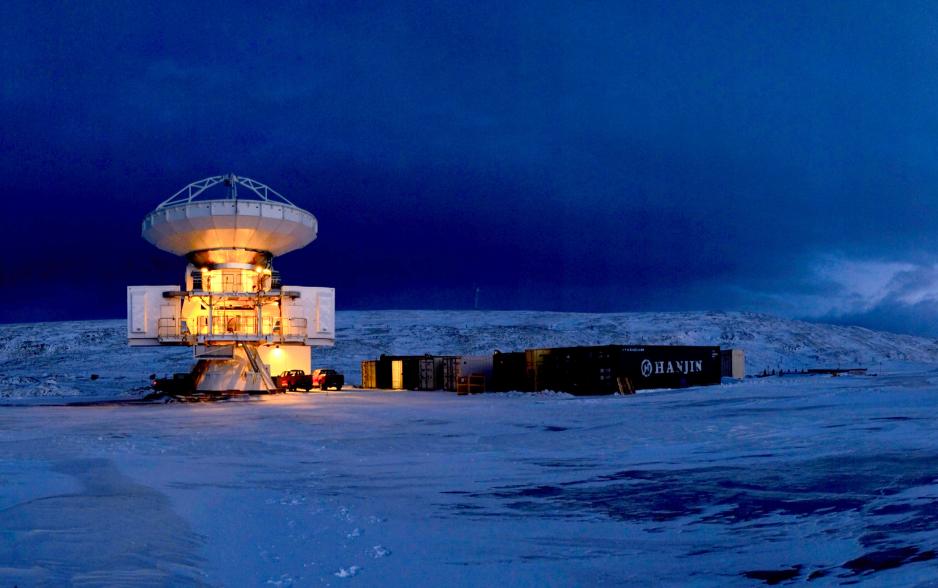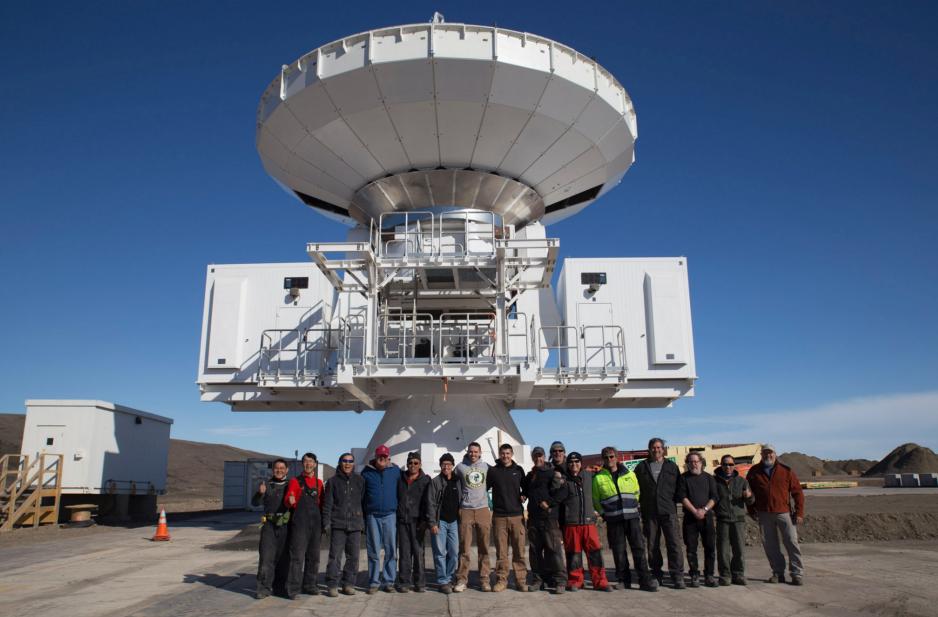New Greenland Telescope Begins Search for Black Holes

A 12-meter telescope began operation at Greenland's Thule Air Base earlier this month. The Greenland Telescope represents a crucial addition to an international effort to study and image massive back holes.
It is part of an array of nine telescopes spanning both hemispheres, including the South Pole, Chile, and Hawaii. The new telescope’s location above the Arctic Circle significantly enhances the network’s capabilities.
The project, known as Event Horizon Telescope (EHT), aims to take extremely high resolution images of a black hole located at the center of the M87 galaxy. Among other things scientists will test Einstein's theory of relativity.
"Adding the Greenland telescope to the EHT will provide a significant improvement to the image quality to observe the shadow of the supermassive black hole in M87," explains Roger Brissenden, Deputy Director of the Harvard-Smithsonian Center for Astrophysics.
Using Earth as a radio dish
In order to directly image the shadow of a black hole millions of light years away scientists would need a telescope as large as Earth itself. To overcome this hurdle researchers employ a trick of combining observations from telescopes thousands of kilometers apart, which de facto turns Earth into a giant radio dish. The EHT project consists of nine separate telescopes. With the addition of the Greenland station the distance between telescopes in the network increased substantially, to about 9,600 kilometers to the Atacama Large Millimeter Array (ALMA) in Chile and to about 8,100 kilometers to the Submillimeter Array (SMA) in Hawaii.
"The Greenland site makes an almost equilateral triangle with ALMA and the SMA and provides an increase of baseline lengths along north-south direction in the EHT array, which contributes to image quality," Brissenden details. Simply put, the larger the distance between telescopes, the better the image resolution.
The project started with just three telescopes located in Hawaii, Arizona, and California in 2011. By 2015 the ALMA in Chile's Atacama Desert and the South Pole Telescope became part of the network more than doubling its resolution. With the addition of the Greenland Telescope the angular resolution of the EHT – a way to measure how much detail a telescope can see – will be almost 1000 times more than the most powerful optical telescopes.
Challenges for a telescope in the Arctic
The Greenland Telescope has seen quite a journey before it was installed at Thule Air Base in 2017. It began its life as a prototype for the ALMA in Chile and was then installed in New Mexico until 2011. It was retrofitted for cold weather operation and shipped to Greenland in the summer of 2016.
"The Greenland telescope was originally a prototype antenna for the ALMA array and was not designed to operate at the extremely cold temperatures we see in Greenland which can fall to the -30 to -60 C range," Brissenden states. The research team had to replace key antenna components, including all the cabling, electronics, bearings, and servo systems and design an upgraded deicing system to prevent snow and ice from accumulating.

Getting a telescope to Greenland
Once the telescope’s components were retrofitted, the researchers faced the challenge of shipping such a large object into the Arctic.
“The telescope was too large to ship fully assembled, we needed to ship 80% of it as components,” explains Brissenden. Some parts, including the main dish were so large that they didn’t fit through the shipyard’s main roller gates and had to be transported to the cargo ship by small barge from the dock. Teams in Europe and Taiwan supplying components for the telescope encountered similar challenges.
After the telescope arrived at Thule Air Base scientists made use of the short summer season to assemble it. Nonetheless some assembly work had to be conducted during November and December 2017 when temperatures dipped to -30C and below. Another particular challenge arrived from the local wildlife. “Polar bear tracks have been seen within a short walk from the telescope site and polar bear sightings occur several times during the year within a mile of the site,” details Brissenden.
“First light" – the moment a telescope conducts its first observation – occurred in December 2017, when it imaged a light on the South Mountain at Thule Air Base.
Relocating the telescope into the ice
The air base is likely not the final destination for the telescope. The research consortium that operates it aims to relocate it to the Greenland summit station of the National Science Foundation (NSF). While Thule Air Base offers a good cold weather test environment with easy access for maintenance and support, atmospheric conditions are not 100 percent ideal in the coastal waters. Too much moisture in the air means that the telescope can not make use of its full capabilities, including operating the most sensitive 345 GHz frequency band.
“The Summit provides dry and stable conditions that will allow the telescope to observe at higher frequencies (345 GHz and above) enabling higher angular resolution single dish astronomy,” confirms Brissenden. Such dry operation environments are only found in a handful of places around the world, such as the South Pole or the Atacama Desert.
Plans are to move the installation to 5 miles north of the NSF summit at 3,210 meters above sea level and use oversize sleds to pull the telescope more than 700 miles across the ice. Here the telescope would operate above most weather and moisture in the lower atmosphere, leading to vastly enhanced observation results. In fact, it would sit just 50 meters or so below the peak of the Greenland ice cap. There a staff of five scientists would man the telescope year-round in one of the most remote places on Earth, reachable only by C-130 cargo plane or Twin Otter plane.
